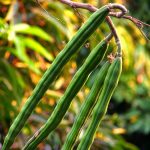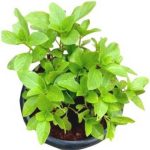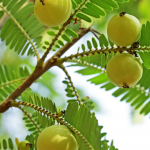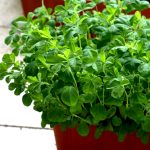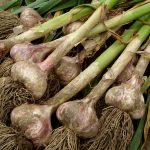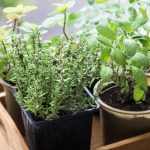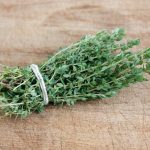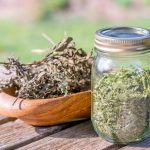10 Immunity Boosting Herbs- Nature has every solution
What is immunity?
The ability of an organism to resist a particular infection by the action of specific antibodies is known as immunity.
A healthy and strong immune system is the most valuable thing a person can own. When it comes to keeping immunity strong, the use of natural remedies cannot be replaced by any medication in the world. Nature gifted humans with these remedies long ago but it seems that we have forgotten its worth due to modernization of lifestyle, busy schedule or we can say the change in mentality changed everything. Though, there are many people who depend upon these remedies for a healthy life.
Strengthen your immunity in a healthy way
A strong immunity is driven by various factors like; lifestyle, environment, psychological factors, age and the most important is our eating habits which have worsened due to lack of time and increased number of responsibilities and laziness. The desire to have everything done within seconds is leading us to become more lethargic and inactive. Any disbalance in these factors may lead to intimidating effects on one’s health. Like, stress can lead to a hormonal imbalance, polluted environment may lead to various problems like asthma, diarrhoea, pneumonia, etc. Bad eating habits lead to obesity, sleepiness, inactive body and much more.
Coming to the concern of our immunity, a few initial changes in all the factors which drive a strong immune system can lead to a healthy life, although we cannot undo the age factor.
The coronavirus pandemic has severely affected people all over the world. The Indian Prime Minister is not only requesting the citizens to stay inside and follow certain measures but is advising us to bring in the use of ayurvedic home remedies to boost our immunity against the novel coronavirus.
Below given are some herbs that can help increase immunity in a healthy way. As, you scroll down reading, you will find that these wonderful herbs not only build up a strong immune system but also have other wonderful benefits and effects on our overall health. So, let’s begin.
- Moringa (Moringa oleifera)
Vitamin C is the pivotal nutrient that our body needs to build strong immunity. Moringa contains 7 times more Vitamin C than oranges. Moringa tree is also known as the Vitamin tree. It has some other vital nutrients that strengthen cells, muscles, tissues and help the body to heal. In addition, it has high levels of amino acids, iron, potassium, and calcium. The ethanolic extracts of Moringa leaves have significant immunomodulatory effect on immune system. These help to invigorate cellular immune response and increases the level of WBC, lymphocyte, and neutrophil count in the body.
That is not all!
The antioxidant properties of Moringa help heal wounds faster, improve digestion, manage diabetes, improve cardiovascular health, and prevent neurodegenerative disorders. Also, it is enriched with anti-bacterial, anti-viral and anti-fungal properties. It keeps deadly tumors away.
- Neem (Azadirachta indica)
Since ancient times, neem has been widely used as an immunity booster and is a native to India. Thanks to its anti-viral, anti-bacterial and anti-fungal properties which keep the body safe from harmful pathogen attacks. It detoxes the blood by flushing out the harmful impurities which helps strengthen immunity. Oils are extracted from the leaves to add in traditional medicines while the leaves are dried and used as herbs in alternative medicine.
The antioxidant property prevents the damage of free radical attacks, reduces cancer and heart disease. Neem can be taken in the form of supplements also, but the best way to benefit from it is consuming it raw or as a decoction.
- Tulsi (Ocimum tenuiflorum)
The holy basil is respected, used as an immunity booster and is one of the best herbs available for medicinal purposes. The leaves of this easily available plant are rich in phytonutrients, Eugenol (a bioactive compound that has anti-microbial, anti-fungal and anti-bacterial properties and reduces stress and plasma glucose levels, vitamins, and minerals.
Recent studies have indicated that tulsi can help slow down the growth of HIV cells and inhibit development of certain carcinogenic cells. It protects you from cold, cough and viral infections too.
The leaves can be infused with the morning tea.
- Ginger (Zingiber officinale)
Ginger has been used since ancient times against flu and common cold. It is great at preventing respiratory tract infections, powers up the immune system and kill viruses due to presence of an antioxidant -gingerol. It has been widely used for curing colds and coughs, nausea, asthma, morning sickness, arthritis, gastrointestinal problems and even depression. Ginger is enriched with anti-inflammatory, antifungal, and anti-cancerous properties.
Powdered ginger mixed with pulverized cloves, cardamom and caraway has been used for digestive ailments since ancient times. It can be added to meals or boiled in tea which turns out to be really delicious and is one of my favorite beverages during winters, yum!
- Amalaki (Phyllanthus emblica)
Bitter is better. Amalaki is also known as Amla, or Indian Gooseberry and is a popular herb in Ayurvedic medicine. It has large amount of Vitamin C which helps boost immunity. Vitamin C not only helps in stimulating the production of antibodies but is also a great source of antioxidants. It has strong anti-bacterial and astringent properties. Amla helps to increase WBC production in the blood.
What is more?
It helps fight common cold, improves eyesight, burns fat, beautifies hair, relieves pain, and improves skin.
- Fenugreek (Trigonella foenum-graecum)
Fenugreek is not only used as a herb (dried or fresh leaves), spice(seeds), vegetable (fresh leaves) but also as a condiment in artificial flavouring of maple syrup or in the production of steroids. Fenugreek seeds have a healthy nutritional profile, containing a good amount of fiber and minerals, including iron and magnesium. It acts as a natural antioxidant and strengthens the immune system. It has a rich source of vitamin E. The fenugreek fiber is used to cure constipation.
Furthermore, fenugreek
- Increases breast milk production
- Boosts testosterone production in men
- May help control diabetes and blood sugar levels
- Balances cholesterol levels
- Has anti-burn properties
Herbal tea made with fenugreek, honey and lemon is a traditional remedy to treat fever. Sprouted seeds of fenugreek and microgreens are used in salads.
- Garlic (Allium sativum)
Garlic’s use was well documented by many major civilizations, including the Egyptians, Babylonians, Greeks, Romans, and Chinese. Scientists now know that most of its health benefits are caused by Sulphur compounds formed when a garlic clove is chopped, crushed or chewed. Perhaps the most famous of those is known as allicin. However, allicin is an unstable compound that is only briefly present in fresh garlic after its been cut or crushed.
Benefits:
- It can combat sickness and cold
- Reduces blood pressure
- Regulates cholesterol level
- The antioxidants may prevent Alzheimer’s disease and dementia
Garlic is used to add flavor to almost every form of cuisine across the world and is popularly used in Chinese dishes and these dishes are totally incomplete without it.
- Giloy (Tinospora cordifolia)
Giloy is an Ayurvedic herb that has been used and advocated in Indian medicine for ages”, says Delhi-based Nutritionist Anshul Jaibharat. Its benefits and uses have even been approved by the FDA (Food and Drug Administration). Many people include giloy in traditional kadhas as well. Here are some of the health benefits of giloy that you must know:
- Boosts immunity
- Treats chronic fever
- Treats diabetes
- Improves digestion
- Fights respiratory problems
- Treats arthritis
- Reduces stress
- Reduces signs of aging
- reduces asthmatic conditions
- Ashwagandha (Withania somnifera)
Ashwagandha is one of the most powerful herbs in Aurvedic healing and is considered to be nature’s gift to mankind. It is classified as a rasayana i.e. rejuvenation in Ayurveda and expected to promote physical and mental health. The Sanskrit term Ashwagandha translates to “smell of horse”, and rightly so. Traditionally, it is believed that a person who consumes this herbal medicine will gain horse-like strength and vitality.
Benefits:
- Helps overcome stress and depression
- Leaves help heal joint pain, skin sores and reduce swelling.
- Increases stamina and energy
- Protects brain cells
- Presence of anti-cancerous agents
- Supports sexual health
- Effective in treating insomnia
- Regulates hormonal balance
- Strengthens hair
- Provides youthful look
- Reduces cortisol levels
- Triphala
Triphala contains the antioxidative properties of three fruits- haritaki, bibhitaki and amla. Half a teaspoon of Triphala has about 10 calories. It consists entirely of carbohydrates and does not contain any fats or proteins. It is now touted as a natural remedy for a variety of health conditions as it is loaded with Vitamin A and C.
Triphala is good for dental health, reduces blood sugar levels, keeps a check on constipation, protects skin and increases collagen production and improves hair quality and growth.
THE BOTTOM LINE
Now we see that building a strong immunity and a healthy immune system is no rocket science. All you need to borrow is just a few ingredients from nature.
Although none of these suggestions can prevent COVID-19, they may reinforce your body’s defences against harmful pathogens. Eating right is a great start, and there are other things you can do to protect yourself from diseases. Remember, a good and healthy change always brings up excellent results. We not only recommend making changes in the diet but also advise to indulge in exercise and yoga. The sum of all these suggestions will surely help the body in one way or the other. Anything can be achieved with a will and determination.
“Healthy citizens are the greatest asset any country can have.”
Subscribe our newsletter to stay updated.

